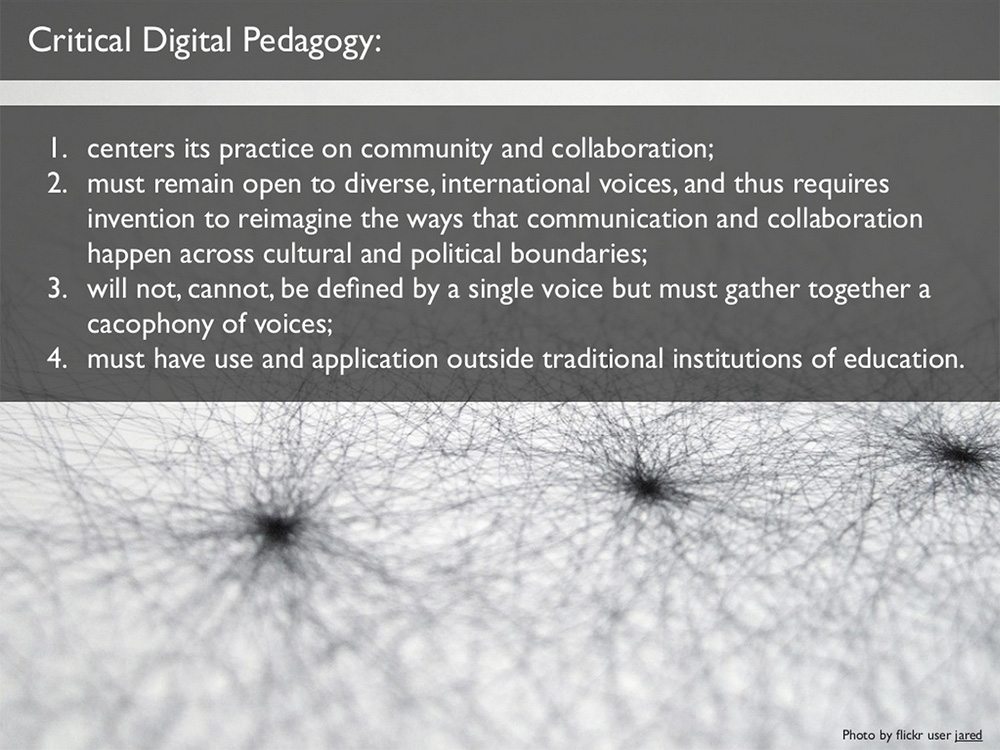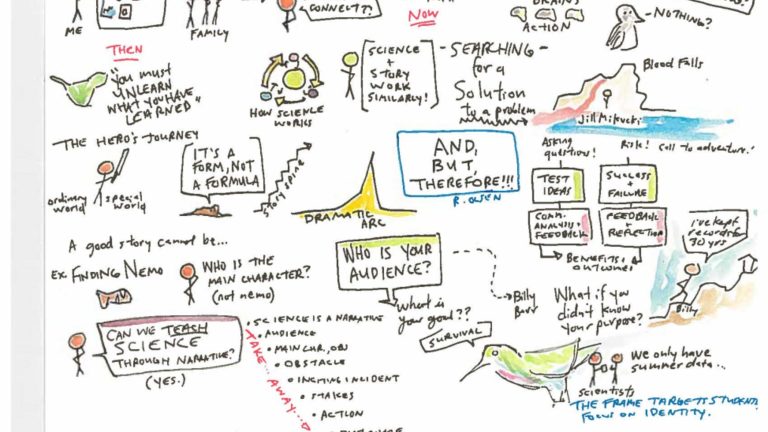What are the Characteristics of Communication?
The characteristics of communication include clarity, effectiveness, and feedback. Communication should be clear and easy to understand, ensuring the message is accurately transmitted between parties.
It should also be effective, meaning it achieves the desired result or outcome. Feedback is crucial in communication, as it allows for understanding and confirmation of the message. These characteristics enable successful communication and contribute to building strong relationships and collaborations.
With their proper implementation, communication becomes a powerful tool for conveying information, resolving conflicts, and fostering understanding. Emphasizing clarity, effectiveness, and feedback ensures communication is efficient and meaningful, leading to positive outcomes for all involved parties.

Credit: www.slideshare.net
Role Of Verbal And Non-Verbal Communication
Verbal and non-verbal communication play a crucial role in conveying messages effectively. Both types of communication have distinct characteristics that contribute to the overall understanding and interpretation of information. By utilizing various forms of expression such as words, gestures, facial expressions, and body language, individuals can accurately express their thoughts, emotions, and intentions to others.
Verbal and non-verbal communication play crucial roles in conveying messages effectively. Let’s explore the importance of verbal communication in conveying messages and the impact of non-verbal cues on communication. Additionally, we’ll discuss how using body language can enhance understanding.
Importance Of Verbal Communication In Conveying Messages:
- Clear and precise: Verbal communication allows individuals to express their thoughts and ideas using words, ensuring the message is conveyed accurately.
- Enhances understanding: It helps in exchanging information, instructions, and feedback, promoting better understanding among individuals.
- Tone and inflection: Verbal communication allows individuals to convey emotions, attitudes, and meanings through their tone and inflection.
- Instant feedback: Verbal communication enables immediate feedback, ensuring quick clarification of doubts and reinforcing understanding.
- Builds relationships: Communicating verbally creates a sense of connection and rapport, fostering stronger relationships among individuals.
Non-Verbal Cues And Their Impact On Communication:
- Facial expressions: Expressions such as smiles, frowns, or raised eyebrows convey emotions and attitudes, adding depth to the spoken message.
- Gestures: Hand movements, pointing, or using gestures can complement verbal communication by emphasizing important points or illustrating ideas.
- Eye contact: Maintaining proper eye contact during communication signals attentiveness, interest, and sincerity, enhancing the overall effectiveness of the message.
- Body posture: How we carry ourselves physically conveys our level of confidence, openness, and engagement, influencing how the message is received.
- Proximity: The physical distance between individuals can affect the level of comfort, engagement, and intimacy in the communication process.
Using body language to enhance understanding:
- Open posture: Open and relaxed body postures, such as uncrossed arms and an upright stance, signal approachability and encourage open dialogue.
- Mirroring: Reflecting the body language of the speaker can create a sense of rapport, showing empathy and understanding.
- Nodding and smiling: Non-verbal cues like nodding of the head and smiling can signal active listening and agreement, promoting effective communication.
- Use of space: Appropriately using personal space can communicate respect and establish a comfortable environment for communication.
Effective communication encompasses both verbal and non-verbal elements. Verbal communication allows individuals to express thoughts clearly, while non-verbal cues add depth and meaning to the message. By using body language effectively, individuals can further enhance understanding and establish stronger connections in their communication efforts.
Effective Listening And Feedback
Effective communication is characterized by active listening and valuable feedback. It involves attentive listening, clarity in expression, empathy, and providing meaningful input to enhance understanding and strengthen relationships.
Active Listening As A Key Characteristic Of Effective Communication
Effective communication involves more than just speaking. Active listening is a crucial component that enables successful communication. It goes beyond simply hearing what the other person is saying; it involves fully engaging with the speaker and understanding their message. Here are some key points to consider:
- Pay attention: When engaging in a conversation, it’s important to give your undivided attention to the speaker. Avoid distractions and focus on what they are saying.
- Show interest: Demonstrate your interest by maintaining eye contact, nodding, or using other non-verbal cues. This shows that you are engaged and encourages the speaker to continue sharing their thoughts.
- Avoid interrupting: Allow the speaker to express their ideas fully before responding or asking questions. Interrupting can disrupt the flow of the conversation and make the speaker feel unheard.
- Ask clarifying questions: If something is unclear, ask specific questions to gain a better understanding. This shows that you are actively listening and interested in fully comprehending the speaker’s message.
- Reflect and summarize: Repeating or summarizing what the speaker has said helps ensure that you understood them correctly. It also gives the speaker an opportunity to clarify any misunderstandings.
Providing Constructive Feedback For Better Communication
Feedback plays a vital role in improving communication skills and strengthening relationships. Effective feedback is constructive, helpful, and aimed at facilitating growth. Consider the following when providing feedback:
- Be specific: Clearly identify the areas where the person can improve or where they excelled. Vague feedback may not be helpful for the recipient to understand what they need to work on.
- Focus on behavior or actions: Provide feedback on what the person said or did rather than attacking their character or personality. This helps create a safe and non-threatening environment for growth.
- Be timely: Provide feedback as close to the event as possible. Prompt feedback helps reinforce positive behavior or address areas that need improvement while the event is still fresh in everyone’s mind.
- Use the sandwich technique: Start with positive feedback, provide constructive criticism, and end with another positive comment. This can help soften the impact of constructive feedback and make it more well-received.
- Offer suggestions for improvement: Instead of just pointing out flaws, provide suggestions or resources that can help the person enhance their communication skills.
Overcoming Barriers To Listening
While active listening is crucial, there are several barriers that can hinder effective listening. Overcoming these barriers is essential for better communication. Here are some common barriers and tips to overcome them:
- Distractions: Minimize external distractions by finding a quiet and suitable environment for communication.
- Prejudices and biases: Be aware of your own biases and prejudices, and make a conscious effort to set them aside when listening to someone else.
- Lack of attention: Practice being fully present and engaged in the conversation. Avoid distractions and focus on the speaker.
- Emotional barriers: Recognize and manage your emotions during a conversation to prevent them from hindering effective listening.
- Different communication styles: Adapt your listening approach to accommodate different communication styles. Be open-minded and flexible when engaging with others.
By actively listening, providing constructive feedback, and overcoming barriers to listening, you can strengthen your communication skills and foster better relationships with others. Remember, effective communication is a continuous process that requires practice and effort.
Cultural And Contextual Factors
Communication is shaped by various cultural and contextual factors. These factors influence the characteristics of communication, including language use, non-verbal cues, and social norms, resulting in diverse and nuanced forms of interaction.
Communication is a complex process that involves the exchange of information and ideas between individuals or groups. Cultural and contextual factors play a significant role in shaping communication styles and norms. In this section, we will explore the impact of culture on communication styles and norms, the importance of adapting communication to different cultural contexts, and the role of context in effective communication.
Impact Of Culture On Communication Styles And Norms:
- Different cultures have unique communication styles and norms that influence how people interact with one another.
- Cultural factors such as language, values, beliefs, and social norms shape the way individuals perceive and express themselves.
- Communication styles vary across cultures, affecting aspects such as directness, formality, nonverbal cues, and personal space.
- Understanding cultural differences is crucial to avoid misunderstandings, misinterpretations, and potential conflicts in communication.
Adapting Communication To Different Cultural Contexts:
- Effective communication requires adapting to the cultural norms and expectations of the individuals or groups involved.
- Awareness of cultural differences helps in selecting appropriate communication strategies, such as using formal or informal language, adjusting nonverbal behavior, or respecting hierarchical structures.
- Flexibility and open-mindedness are essential when interacting with individuals from diverse cultural backgrounds.
- Being sensitive to cultural nuances fosters understanding, respect, and successful communication in multicultural settings.
Understanding The Role Of Context In Effective Communication:
- Context refers to the circumstances, environment, and situation in which communication occurs.
- Contextual factors, such as time, place, relationship, and purpose, influence the meaning and interpretation of messages.
- Effective communication involves considering the context and adapting communication accordingly.
- Different communication channels, such as face-to-face conversations, emails, or phone calls, require different approaches to ensure clear and meaningful exchanges.
Cultural and contextual factors significantly impact communication styles and norms. Adapting communication to different cultural contexts and understanding the role of context in effective communication is crucial for building successful relationships and avoiding misunderstandings. By being aware of cultural differences and adapting our communication strategies accordingly, we can foster respectful and effective communication in diverse settings.
So, whether we are communicating with individuals from different countries or within our own cultural context, being mindful of these factors enhances the quality of our interactions.
Frequently Asked Questions On What Are The Characteristics Of Communication?
What Are The 7 Characteristics Of Communication?
The 7 characteristics of communication include clarity, conciseness, completeness, courtesy, correctness, consideration, and concreteness. Clarity ensures the message is easy to understand. Conciseness involves using few words to convey the message effectively. Completeness means providing all necessary information. Courtesy involves being polite and respectful.
Correctness ensures the message is accurate and free from errors. Consideration refers to adapting the message to the recipient’s needs and interests. Concreteness involves using specific and tangible language to enhance understanding. These characteristics enhance effective communication by reducing misunderstandings and ensuring the message is conveyed clearly and appropriately.
They promote meaningful interactions and facilitate the exchange of information in a way that is easy to comprehend and respond to.
What Are The Five Major Characteristics Of Communication?
The five major characteristics of communication are: 1. Verbal: communication involves speaking and listening, using words to convey messages. 2. Nonverbal: communication includes gestures, facial expressions, body language, and tone of voice, which enhance understanding. 3. Intentional: communication is purposeful, aiming to convey thoughts, feelings, and information to others.
4. Relational: communication builds and sustains relationships by fostering understanding, trust, and connection. 5. Contextual: communication is influenced by the surrounding environment, cultural norms, social situations, and the relationship between the sender and receiver. These factors shape the meaning and effectiveness of communication.
Mastering these characteristics leads to meaningful and effective communication, benefiting personal and professional interactions.
What Are 4 Characteristics Of Good Communication?
Good communication involves four key characteristics: clarity, conciseness, active listening, and emotional intelligence. Clear communication is essential to ensure that the message is easily understood by the recipient. Keeping sentences concise helps convey information efficiently, avoiding unnecessary complexity. Active listening enables individuals to fully understand and respond appropriately to the speaker, fostering a deeper level of understanding.
Emotional intelligence helps people connect and empathize with others, promoting effective communication by being sensitive to both verbal and nonverbal cues. By mastering these characteristics, individuals can engage in meaningful and productive discussions, enhance relationships, and build trust.
What Are The Three Characteristics Of Communication?
The three characteristics of communication are clarity, brevity, and effectiveness. Clarity ensures that the message is easily understood by the receiver. Brevity means that the information is concise and to the point, avoiding unnecessary details. Effectiveness refers to the ability of the communication to achieve its intended purpose and impact the receiver positively.
A clear and concise message that effectively conveys the desired information or emotion is crucial for successful communication.
Conclusion
Communication is a fundamental aspect of human interaction, and understanding its characteristics is essential for effective communication. By examining the elements of communication, such as verbal and non-verbal cues, active listening, and clarity, we can enhance our ability to convey our ideas and connect with others.
Clear and concise communication eliminates misunderstandings and ensures that messages are delivered accurately. By utilizing both verbal and non-verbal cues, like body language and tone of voice, we can enhance the impact of our communication. Active listening, being fully present in a conversation, and validating others’ perspectives, promotes mutual understanding and empathy.
It fosters open dialogue and strengthens relationships. Moreover, realizing that communication is a two-way process encourages us to be mindful of our own communication style and adapt it according to the needs of our audience. Effective communication is a vital skill in personal and professional relationships.
By embracing the characteristics of communication, we can navigate conflicts, express ourselves clearly, and build meaningful connections with others. So, let’s strive to be mindful communicators and unlock the power of effective communication.



